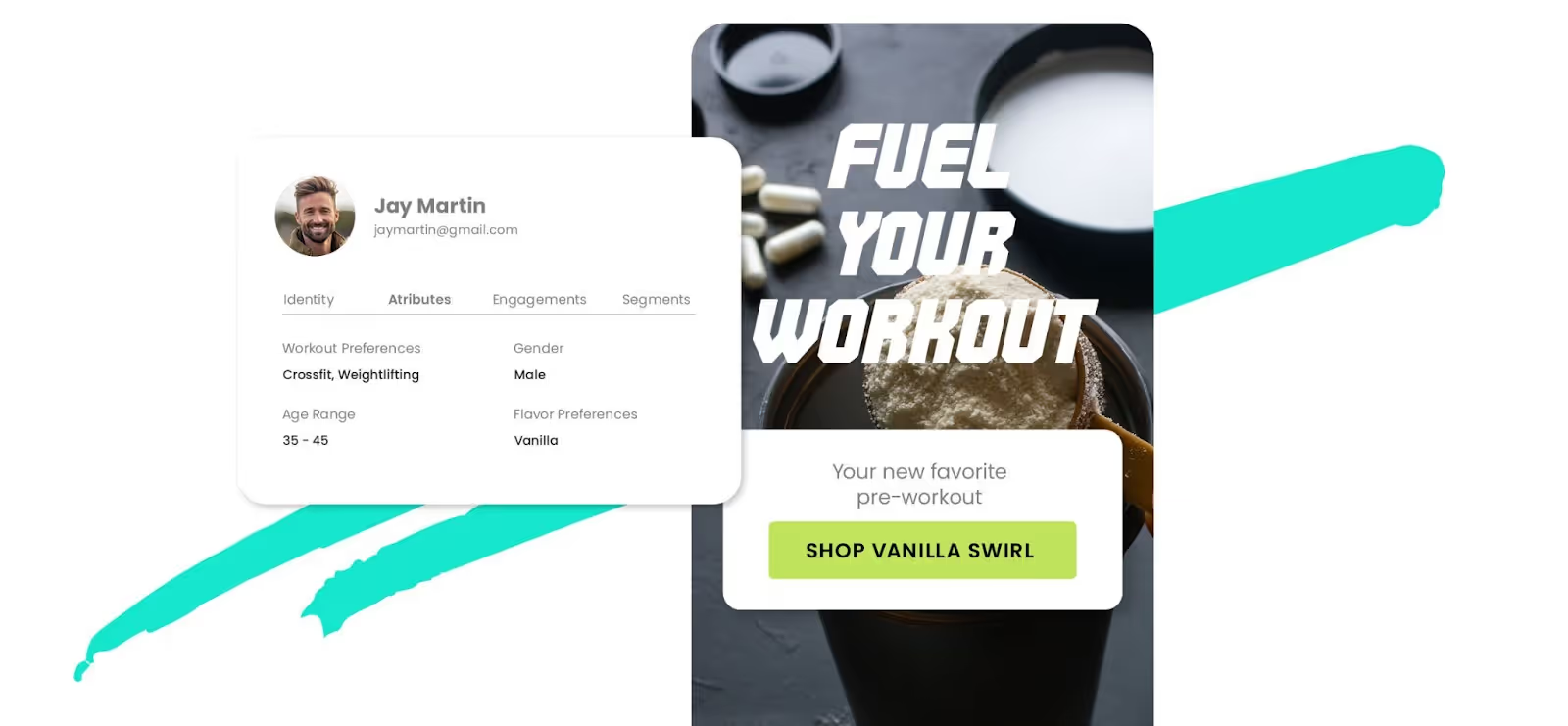.avif)
In the realm of marketing, the journey from knowing your customers to connecting with them on a personal level is paved with two essential ideas: segmentation and personalization. But what if I told you there's another piece to the puzzle? Say hello to zero party data.
In this blog, we'll unravel the connection between segmentation and personalization, shed light on the limitations of third-party data, and explain how to use zero-party data.
Think of segmentation as a blueprint for understanding your audience. It's like putting people into groups based on shared characteristics. Now, personalization takes this a step further. It's like taking those groups and tailoring your approach to each individual within them.
Consider this: you're a supplement brand, and you've categorized your customers into fitness enthusiasts, health-conscious people, and those looking for a quick energy boost. That's segmentation at play. But here's where the magic happens: you then craft messages and offers that speak directly to each group's needs and preferences. That's personalization.

Third-party data is information gathered from external sources. Now, let's address what’s wrong with third-party data in respect to the personalization journey. It's like a puzzle made of borrowed pieces.
Third-party data has its perks, but it also comes with limitations. It might be outdated, inaccurate, or incomplete. Plus, with growing concerns about privacy, relying solely on third-party data can lead to a bit of a pickle.
This is where zero party data enters the scene. Zero party data is voluntarily shared by your customers. It's like they're handing you a personalized guidebook to their preferences, needs, and desires. Imagine a ski and snowboard shop. Instead of guessing what gear your customers want, they tell you directly. It's like having a chat with each customer and learning about their snow adventures.
Alright, let's tie this all together. Segmentation and zero party data are a match made in heaven. Here's how they work together:
Start by creating segments. These are like broad categories that help you get a general sense of who your customers are. Now comes the cool part. You gather zero party data. This is where your customers share details about their preferences, intentions, and even what makes them tick.
Armed with both segmentation and zero party data, you're ready to personalize your approach. Imagine you're that supplement brand again. Now, you don't just know your customers are fitness enthusiasts; you know what kind of workouts they prefer, their dietary goals, and maybe even their favorite flavors. Your messages and offers are now laser-focused.
Join our newsletter list where you will get the latest trends and insights on collecting and monetizing first-party data.
So, how do you gather zero party data? Simple, you make it easy and valuable for your customers. Here's how:
1. Timing Matters: Choose moments in the customer journey where they're engaged and willing to share. It could be during sign-ups, UGC, or even post-purchase surveys.
2. Offer Value: People love value, right? Let them know that sharing their preferences means you'll send them product recommendations and offers that actually resonate with them.
3. Be Clear: Tell them why you're collecting data and how it'll be used. Transparency is the golden rule.
4. Respect Their Space: Promise them that their data is safe and sound. This builds trust, and trust is the foundation of a solid customer relationship.
In a world where customer preferences shift like sand dunes, going the extra mile is no longer a luxury—it's a necessity. The dynamic duo of segmentation and personalization gets you started, but it's zero party data that takes you to the finish line. It's the difference between knowing your customers by name and knowing them like a close friend.
So, marketers embrace zero party data. Create experiences that feel like tailored conversations, not robotic interactions.There are so many benefits of zero-party data collection. Let's make the most of every customer's unique journey. It's not just about making a sale; it's about creating connections that last.
Sources: